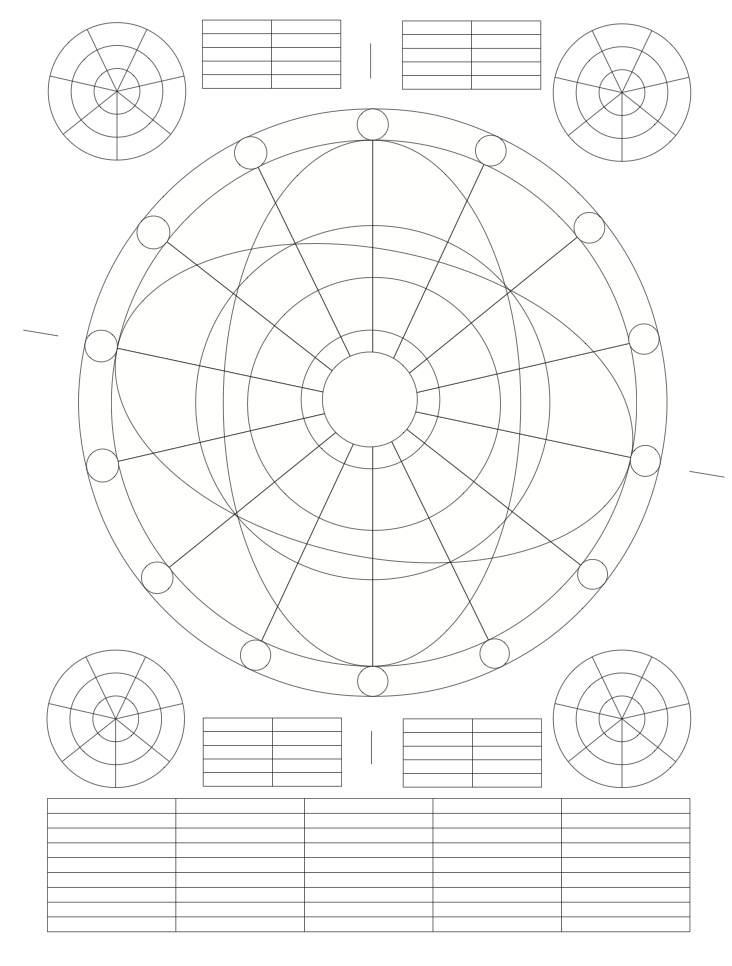by Melanie
This map is kind of the way I see all stories. At the bottom, you can identify characteristics, like the seven deadly sins, and a comparison to the seven heavenly virtues, or Gandhi’s list of sins, or whatever, so you are ready to compare and contrast. The mini circles on the edges can be attributes of the minor friends surrounding the main group, with the tables to the side as events and interaction cues. The main background of the center circle can be more specific attributes, and the 90 degree center oval like a venn diagram of the attributes of the main characters, with the 30 degree oval as the protagonist or side kick. This map can be used to show inter- connection in the scenes of the characters.
You can use the map to drill down parts of the story also. For instance, if the story is a “who done it?”, you could use the background of the center circle of the map to show all the evidence collected at a scene, and the evidence that point to guilt in the 30 degree circle. In contrast, you know the person is innocent (because you are writing it), and the evidence that points to innocence in the 90 degree circle.
If you are writing multiple stories for your characters in a sequence, you could use the map to remember the items from the last story that carry over to the next story. If you find some time that you need to write a variation, you could turn the paper X degrees. Color-coding could be added to keep the story in check also.
In my case, I am looking at actual historical people in a given city. I am tracking the issues, attributes, and documents I discover in the archives about the people. It is like starting with a census or list of names, and trying to figure out who the people are. One is a grocer, one a carpenter, one a merchant. My modern-day narrator and friends are the only fictional characters. What do we find out about the people, positive and negative, straight up or a little skewed?
When we find an interaction, like on the sales journal of the merchant, who mentions selling thus and so to the carpenter, what interconnections might that bring to light? Maybe the carpenter is building something for the grocer, and purchasing the supplies from the merchant… In my case the carpenter is a fine finish artisan, who makes beautiful organ and clock cabinets, but he also makes coffins. How are these interactions between the carpenter and his customers different? What does that tell us about the community?
This map is just what I use to map the depth of the people, story, and plot. Right now, all the characters are just markings on gravestones, names in census lists and sales journals. How do I bring the city back to life in the mind of the readers? How do I show the sense of community and interdependence? I need to see the action.
This map is the best way I came up with to do this.
Just an idea.
Melanie

